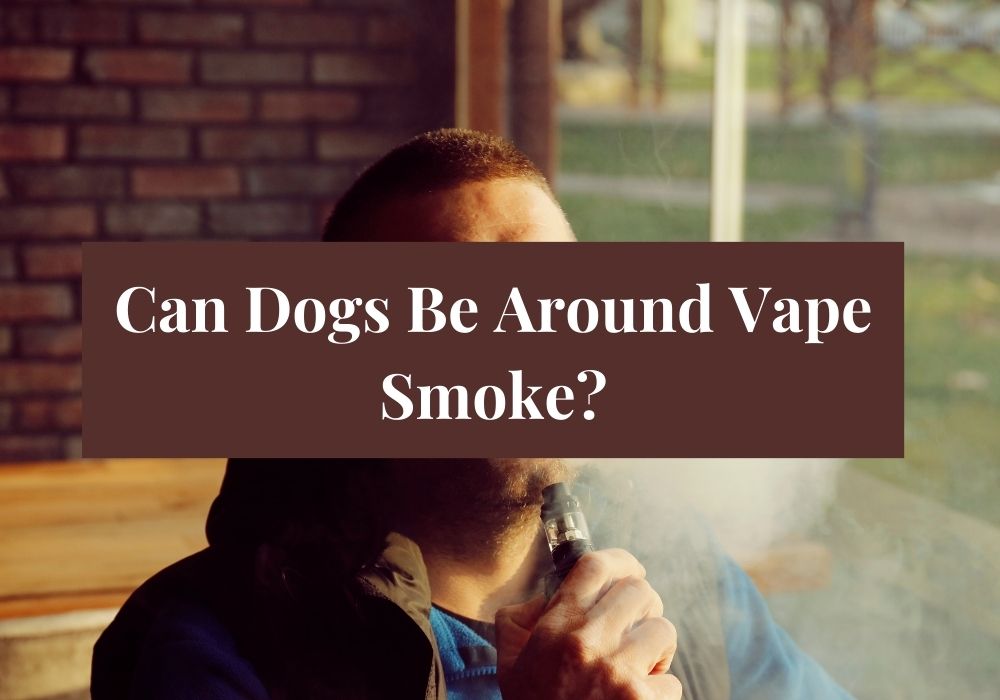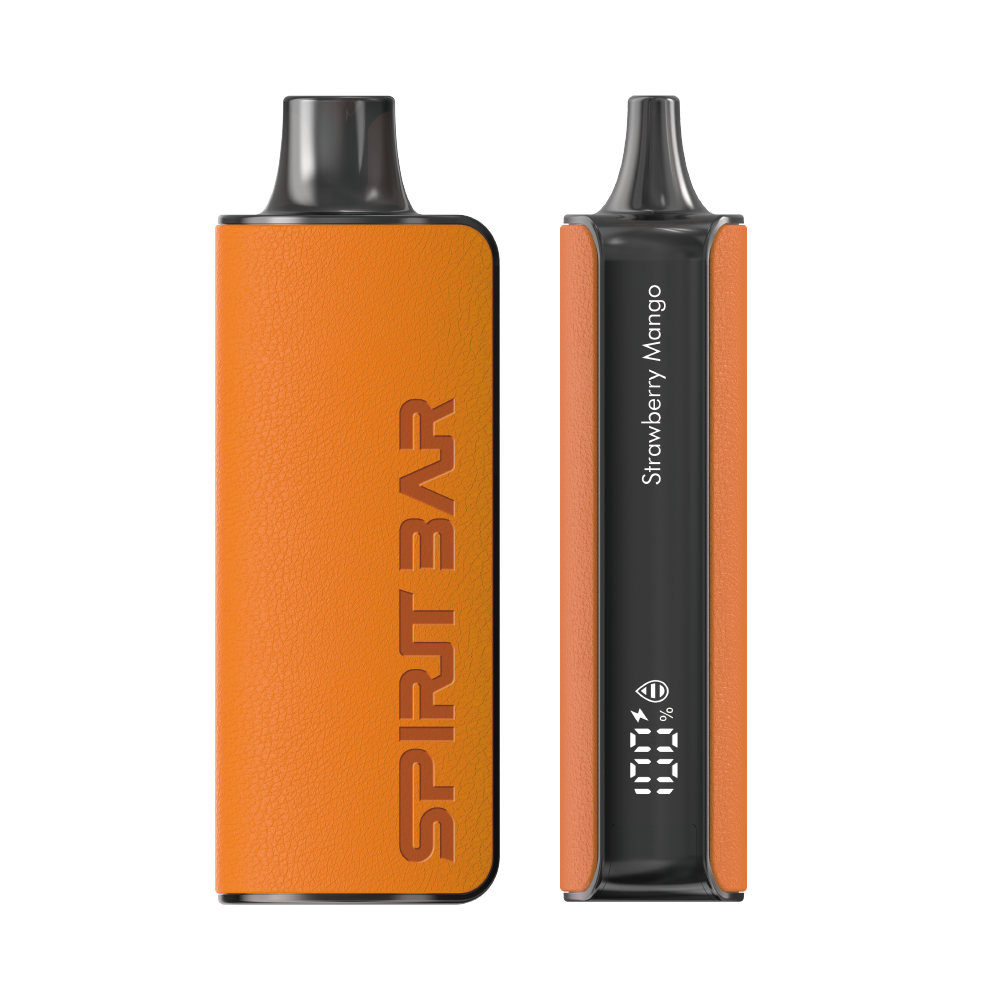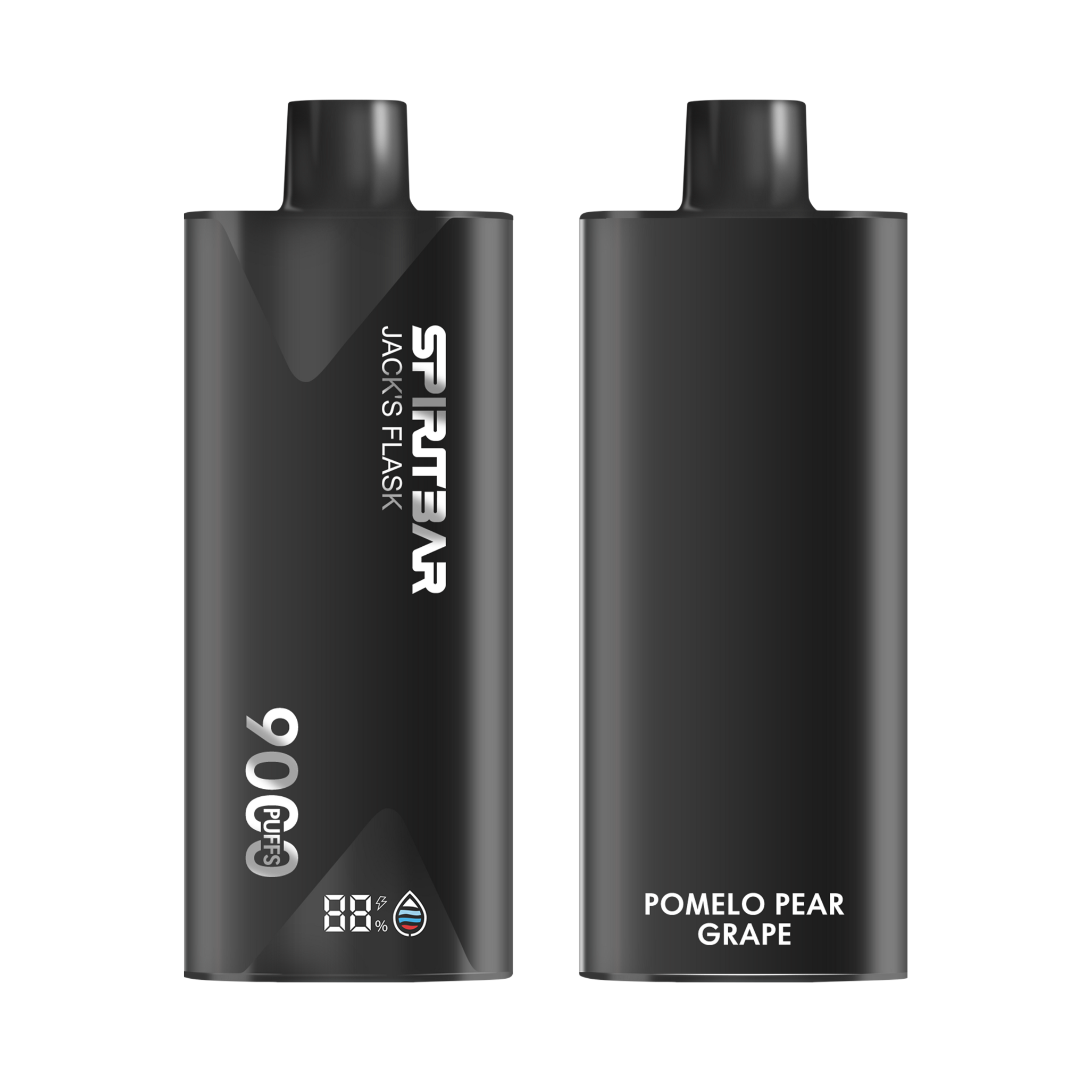Can Dogs Be Around Vape Smoke?

If you’re a vaper and a dog owner, you may be wondering if it’s safe to vape around your furry friend. While vaping is often touted as a safer alternative to smoking, it’s important to understand the potential risks to your pet. Secondhand smoke exposure can be harmful to animals, and vaping is no exception.
The chemicals in e-cigarettes, including nicotine and flavorings, can be dangerous to pets if ingested or inhaled. Dogs, in particular, may be at risk of nicotine poisoning if they chew on or swallow e-cigarette cartridges or batteries. Additionally, the vapor itself can irritate your pet’s respiratory system, leading to coughing, sneezing, and other symptoms.
While there is still limited research on the effects of vaping on pets, it’s important to err on the side of caution. If you’re going to vape around your dog, make sure to do so in a well-ventilated area and avoid blowing the vapor in their face. It’s also a good idea to keep your vaping supplies out of reach of your pet to prevent accidental ingestion.
SPIRITBAR Katana BP10000
- Slender, leather-textured body reminiscent of a katana handle for an authentic samurai feel
- Unique samurai-inspired e-liquid flavor - fruity yet not too sweet, with a luxurious, elegant aroma
- Powerful 650mAh rechargeable battery for extended vaping time
- Large 18ml e-liquid capacity and 10,000 puff capacity
- Advanced mesh coil and e-liquid & power display screens for optimal vaping experience
The special juice captures the essence of the samurai spirit with its rich, smoothly pulsating flavor that brings new satisfaction with every puff. The device's slender, leather-textured design evokes the grip of a samurai's katana, making this product a perfect choice for beginner vapors.
Understanding Vape Smoke
Vaping has become a popular alternative to traditional smoking, but it is important to understand the potential hazards it poses to your furry friends. In this section, we will explore the chemical composition of vape smoke and the potential hazards it can pose to dogs.
Chemical Composition
Vape smoke is composed of numerous chemicals, including nicotine, propylene glycol, glycerol, and various flavorings. The amount and type of chemicals in vape smoke can vary depending on the specific product being used.
Nicotine is a highly addictive substance that can be toxic to dogs. Ingesting even small amounts of nicotine can cause vomiting, diarrhea, and other symptoms of nicotine poisoning. Propylene glycol and glycerol are used to create the vapor in e-cigarettes and can also be harmful to dogs if ingested in large amounts.
SPIRITBAR Jack’s Flask 9000 Puffs
- Stylish pirate flask-shaped body providing an exciting vaping experience
- Delivering up to 9000 puffs per device
- 20ml e-liquid capacity with 50mg nicotine strength for satisfying throat hit
- Specialized pirate-themed e-juice flavors for rich, swirling taste
- Premium mesh coil optimizes flavor profile for maximum vaping enjoyment
This disposable vape captures the daring spirit of the high seas with its flask styling and signature pirate e-juice flavors. The extraordinary battery life provides 9000 indulgent puffs for extended vaping pleasure. Live boldly and freely with the Jack's Flask - a legendary vaping experience fit for a pirate's adventures.
Potential Hazards
Exposure to vape smoke can pose several hazards to dogs. Inhaling secondhand smoke can cause respiratory problems, such as coughing, wheezing, and difficulty breathing. Dogs with pre-existing respiratory conditions, such as asthma or bronchitis, may be particularly sensitive to the effects of vape smoke.
Ingesting vape liquid can also be dangerous for dogs. Nicotine poisoning can cause a range of symptoms, including vomiting, diarrhea, seizures, and even death in severe cases. Dogs may be attracted to the sweet flavors used in some vape liquids, making it important to keep these products out of reach.
In conclusion, it is important to understand the potential hazards of vape smoke for dogs. By being aware of the chemical composition of vape smoke and the potential hazards it poses, you can take steps to protect your furry friend from harm.
Canine Respiratory System
Basic Structure
Dogs have a complex respiratory system that includes the nose, pharynx, larynx, trachea, bronchi, and lungs. The nose is responsible for filtering and warming the air before it enters the body. The pharynx and larynx are located at the back of the throat and help to direct air into the trachea. The trachea, also known as the windpipe, is a tube that connects the larynx to the bronchi. The bronchi are the two main branches of the trachea that lead to the lungs. The lungs are responsible for the exchange of oxygen and carbon dioxide.
Effects of Smoke Inhalation
Secondhand smoke and vape smoke can have detrimental effects on a dog’s respiratory system. Smoke contains many harmful chemicals, including nicotine, tar, and carbon monoxide. When a dog inhales smoke, these chemicals can irritate and damage the delicate tissues in the respiratory system. This can lead to inflammation, coughing, and difficulty breathing.
According to PetPlace, respiratory irritation and long-term effects of second-hand smoke (vapors) can develop in some pets. Some dogs can have difficulty breathing, coughing, panting, wheezing, or experience irritation to their nose and eyes. Additionally, vape juice can be especially dangerous to dogs if ingested. Many types of e-juice are flavored with appealing scents that can pique a dog’s interest, leading to accidental ingestion and potential poisoning.
SPIRITBAR Katana BP10000
- Slender, leather-textured body reminiscent of a katana handle for an authentic samurai feel
- Unique samurai-inspired e-liquid flavor - fruity yet not too sweet, with a luxurious, elegant aroma
- Powerful 650mAh rechargeable battery for extended vaping time
- Large 18ml e-liquid capacity and 10,000 puff capacity
- Advanced mesh coil and e-liquid & power display screens for optimal vaping experience
The special juice captures the essence of the samurai spirit with its rich, smoothly pulsating flavor that brings new satisfaction with every puff. The device's slender, leather-textured design evokes the grip of a samurai's katana, making this product a perfect choice for beginner vapors.
It’s important to keep your dog away from smoke and vape smoke to protect their respiratory health. If you are a smoker or vaper, consider smoking or vaping outside away from your dog. Additionally, if you have guests over who smoke or vape, ask them to do so outside or in a designated smoking area away from your dog.
Effects of Vape Smoke on Dogs
If you are a dog owner and you vape, you may be wondering whether it is safe for your furry friend to be around vape smoke. While there is limited research on the effects of vape smoke on dogs, there are some potential risks to be aware of.
Short-Term Effects
Dogs can experience short-term effects from exposure to vape smoke, just like they can from exposure to cigarette smoke. According to the RSPCA, common signs of nicotine poisoning in dogs include vomiting, drooling, lethargy, wobbliness, fast heart rate, weakness, shaking, and seizures. These symptoms can occur if your dog ingests vape juice or inhales vape smoke.
In addition to the risk of nicotine poisoning, dogs can experience respiratory irritation and other short-term effects from exposure to vape smoke. According to PetGuide, some dogs can have difficulty breathing, coughing, panting, wheezing, or experience irritation to their nose and eyes.
Long-Term Effects
While the long-term effects of vape smoke on dogs are not well understood, there are some potential risks to be aware of. According to PetPlace, respiratory irritation and long-term effects of second-hand smoke (vapors) can develop in some pets. This can lead to chronic respiratory problems and other health issues over time.
It is also worth noting that some types of vape juice can be more harmful to dogs than others. For example, PetMD warns that dogs can become seriously ill very quickly after ingesting even small quantities of liquid nicotine, which is absorbed in the body more rapidly and completely and sometimes in greater amounts compared to cigarettes.
Overall, while more research is needed to fully understand the effects of vape smoke on dogs, it is best to avoid exposing your furry friend to vape smoke whenever possible. If you do vape, be sure to store your vape juice and equipment safely and away from your dog to reduce the risk of accidental ingestion or exposure.
Preventing Exposure to Vape Smoke
If you’re a dog owner who vapes, it’s important to take steps to prevent your furry friend from being exposed to vape smoke. Here are some tips:
Indoor Air Quality
One of the best ways to prevent your dog from being exposed to vape smoke is to maintain good indoor air quality. This means making sure that your home is well-ventilated and that air filters are regularly changed. Consider investing in an air purifier to help remove any harmful particles from the air.
If you vape indoors, try to do so in a separate room away from your dog. Keep the door closed and use a fan or window to help circulate the air.
Alternatives to Vaping
Another way to prevent your dog from being exposed to vape smoke is to consider alternatives to vaping. For example, you could try using nicotine patches or gum instead. If you’re using vaping as a way to consume cannabis, consider using edibles or other smokeless methods instead.
If you do continue to vape, make sure that all vaping items are safely stored in a pet-inaccessible place. Get rid of used batteries and containers safely, and charge your vape pen in a place that is inaccessible to your pets.
By taking these steps, you can help ensure that your dog stays safe and healthy while you continue to enjoy vaping.








